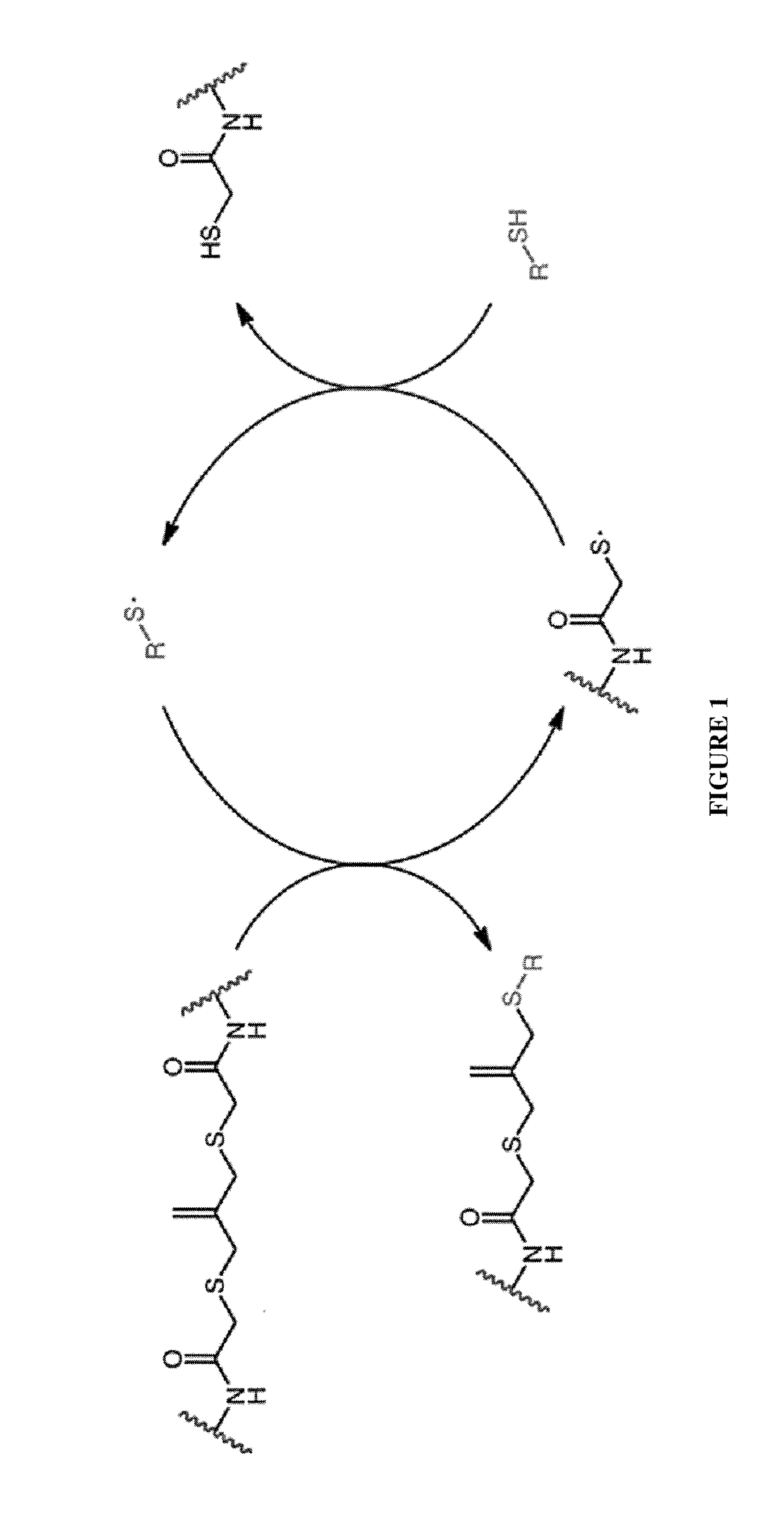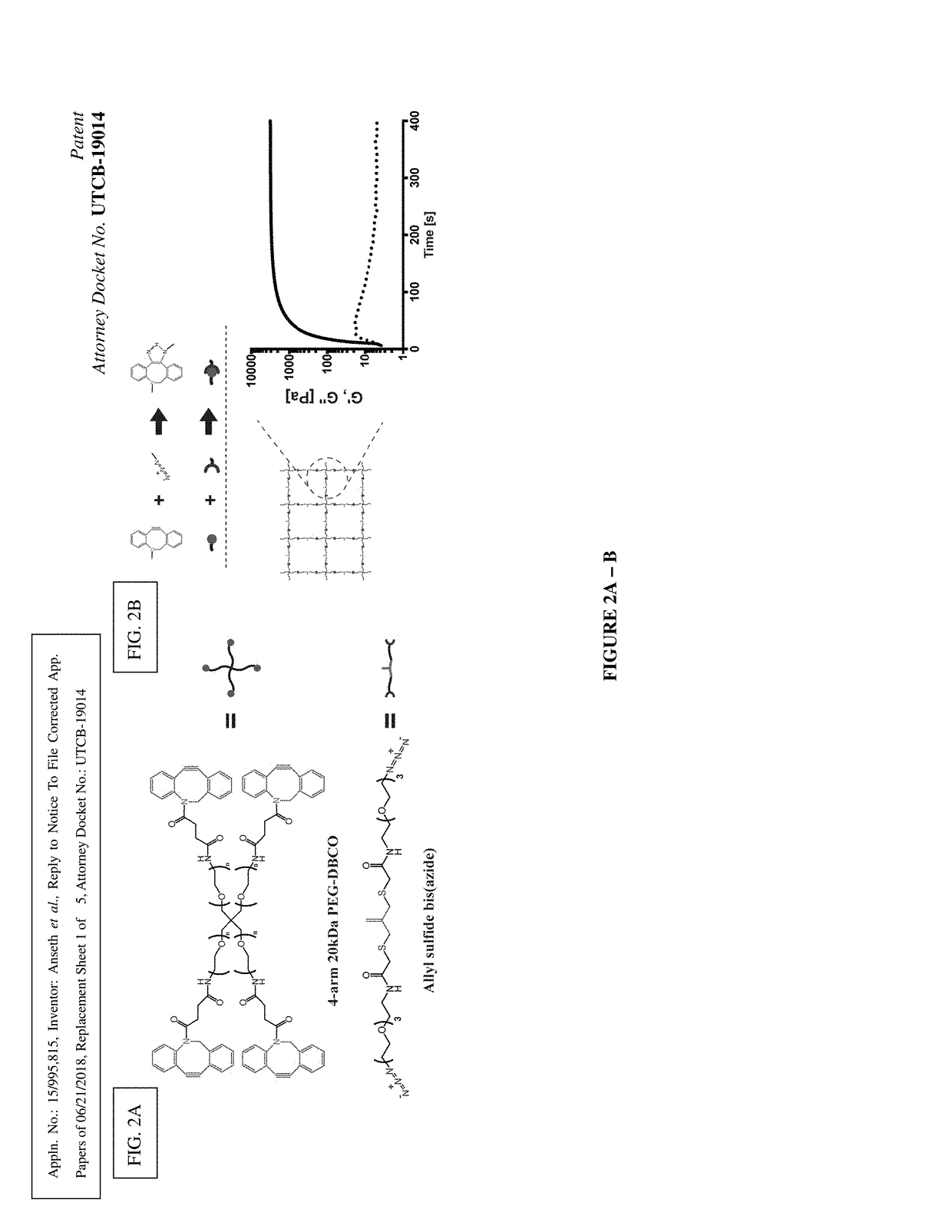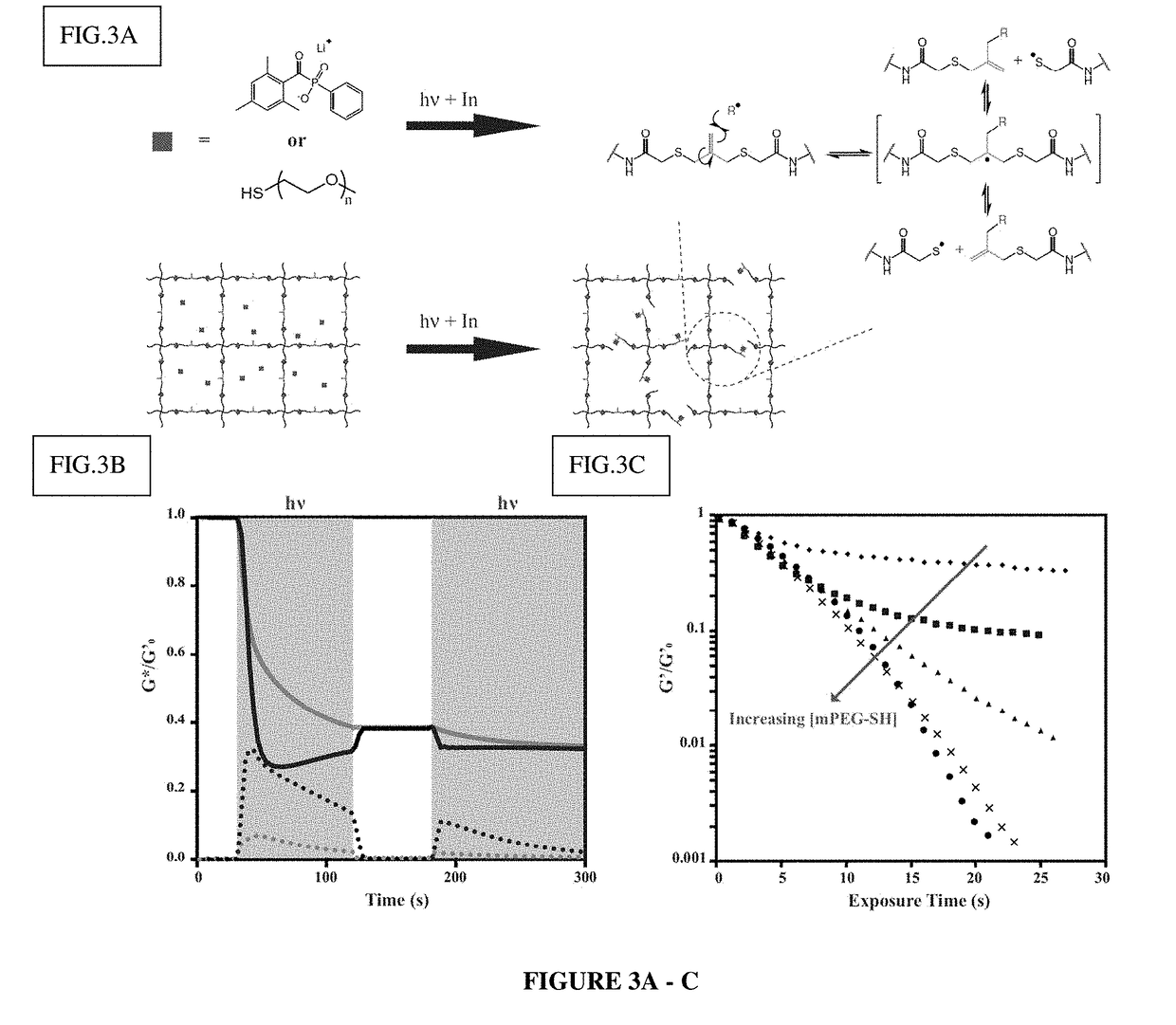Amplified Photodegradation of Hydrogels and Methods of Producing the Same
- Summary
- Abstract
- Description
- Claims
- Application Information
AI Technical Summary
Benefits of technology
Problems solved by technology
Method used
Image
Examples
example 1
Synthesis of Compound 1 [allyl sulfide bis(methyl ester)]
[0093]
[0094]Sodium (1.1 g, 48 mmol) was added to a flame dried flask charged with 150 mL anhydrous methanol and allowed to react for 10 minutes. After dissolution of the sodium, methyl thioglycolate (3.93 mL, 44 mmol) was added to the flask and the mixture was heated to reflux under an argon atmosphere and reacted for 20 minutes. 3-chloro-2-chloromethyl-1-propene (2.31 mL, 20 mmol) dissolved in 20 mL anhydrous methanol was then added dropwise to the reaction vessel over 45 minutes. The reaction mixture was purged with argon and stirred for 18 h at 60° C. The resulting mixture was filtered and concentrated through rotary evaporation to yield a yellow crude oil. The crude oil was taken up in 100 mL MQ water and extracted 6× with 100 mL diethyl ether (Et2O). The combined organic phases were washed with 200 mL brine, dried over sodium sulfate and concentrated by rotary evaporation to yield a pale yellow oil (2.88 g, 55%). TLC in 8...
example 2
Synthesis of Compound 2 [allyl sulfide bis(acetic acid)]
[0095]
[0096]100 ml of 1M LiOH (aq) was added to a solution of 1 (2.88 g, 10.9 mmol) in 100 ml THF on ice. The turbid solution was stirred for 5 h on ice, after which the solution was acidified (to pH=0) by addition of ˜100 mL 2M HCl. 50 ml brine was added and the solution was extracted with EtOAc (4×125 ml). The combined organics were dried over Na2SO4 and concentrated to yield a dark brown oil (2.57 g, 100%)
[0097]1H NMR (400 MHz, DMSO-d6) δ 12.58 (s, 2H), 5.04 (s, 2H), 3.32 (d, J=0.8 Hz, 4H), 3.14 (s, 4H).
example 3
Synthesis of Compound 3 [allyl sulfide bis(PEG3-azide)]
[0098]
[0099]A flame dried RBF was charged with 2 (360 mg, 1.53 mmol), diisopropylethylamine (DIEA, Sigma) (2.7 mL, 15.3 mmol), O-(7-Azabenzotriazol-1-yl)-N,N,N′,N′-tetramethyluronium hexafluorophosphate (HATU, Chem-Impex Int'l) (1.16 g, 3.05 mmol), and 250 mL ethyl acetate. The resulting slurry was purged with argon and reacted for 1 hr at room temperature. 11-Azido-3,6,9-trioxaundecan-1-amine (TCI America) (1 g, 4.58 mmol) was added to the flask and the mixture was stirred overnight at room temperature under an argon atmosphere. The resulting mixture was vacuum filtered and washed with 1N HCl (1×250 mL), saturated aq. sodium bicarbonate (1×250 mL), water (1×100 mL), and brine (1×100 mL). The organic phase was dried over sodium sulfate and concentrated to yield a dark yellow oil (646 mg, 66%). TLC in 80% acetone:20% hexanes revealed a single spot at Rf=0.3 with b staining.
[0100]1H NMR (400 MHz, Methanol-d4) δ 5.12 (s, 2H), 4.66 ...
PUM
 Login to View More
Login to View More Abstract
Description
Claims
Application Information
 Login to View More
Login to View More - R&D
- Intellectual Property
- Life Sciences
- Materials
- Tech Scout
- Unparalleled Data Quality
- Higher Quality Content
- 60% Fewer Hallucinations
Browse by: Latest US Patents, China's latest patents, Technical Efficacy Thesaurus, Application Domain, Technology Topic, Popular Technical Reports.
© 2025 PatSnap. All rights reserved.Legal|Privacy policy|Modern Slavery Act Transparency Statement|Sitemap|About US| Contact US: help@patsnap.com



